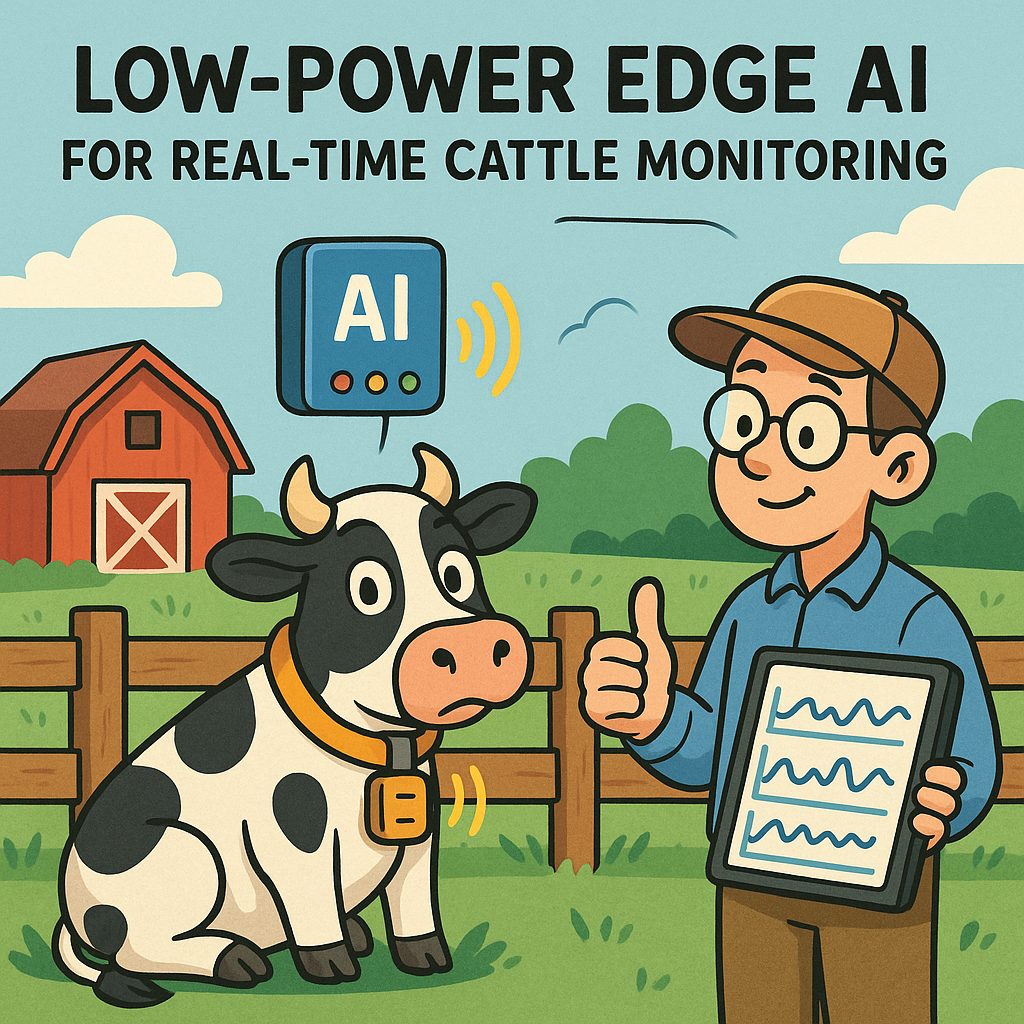Understanding the Need for Low-Power Edge AI in Dairy Farming
The dairy industry is rapidly evolving, driven by the need for increased productivity and sustainability. Traditional methods of monitoring cattle behavior are often labor-intensive and may not provide timely insights into animal health and welfare. With the advent of IoT (Internet of Things) sensors and edge AI, there’s a promising opportunity to revolutionize how we analyze behavior in dairy cattle. However, developing a low-power edge AI module tailored for real-time behavior analysis presents its own set of engineering challenges.
Challenges in Real-Time Behavior Analysis
One of the primary challenges is ensuring that the system can process data in real-time without draining the energy resources of the module. Dairy farms can be expansive, and the remote placement of sensors means that power supply options are often limited. The goal is to create a system that can continuously monitor and analyze cattle behavior while operating efficiently on minimal power.
Choosing the Right Hardware
The first step in our design process was selecting suitable hardware components. We opted for a low-power microcontroller with integrated machine learning capabilities, such as the ESP32. This choice allows for local data processing, reducing the need for constant communication with a central server, which can be power-intensive. Additionally, we implemented a combination of accelerometers and temperature sensors to gather data on cattle movement and health metrics.
Firmware Development for Efficient Data Processing
With the hardware selected, the next critical step was developing efficient firmware. The firmware must be optimized for low latency and power consumption. We utilized a real-time operating system (RTOS) to manage tasks effectively without overloading the microcontroller. Key algorithms for behavior analysis were implemented using lightweight machine learning models that could run directly on the device.
Algorithm Selection: Balancing Complexity and Performance
Choosing the right algorithms for behavior analysis was a balancing act. We initially experimented with deep learning models due to their accuracy in classification tasks. However, these models proved too resource-intensive for our low-power requirements. Instead, we focused on decision trees and support vector machines (SVM), which provided a good trade-off between accuracy and computational efficiency. These algorithms were trained on a dataset comprising various behavior patterns, such as grazing, resting, and social interactions.
Design Trade-offs and Real-World Considerations
Designing a low-power edge AI module also necessitated making trade-offs regarding the sampling frequency of the sensors. Higher frequencies yield more granular data but also consume more power. After extensive testing, we settled on a sampling rate that provided sufficient data for accurate behavior classification while keeping power consumption within acceptable limits.
Addressing Connectivity and Data Management
While the edge AI module processes data locally, connectivity remains crucial for broader insights and historical analysis. We incorporated a low-power wide-area network (LPWAN) protocol like LoraWAN for periodic data transmission, ensuring that the module can communicate behavior trends back to a centralized system without excessive power drain. This two-pronged approach allows for robust real-time analysis while maintaining a connection to the cloud for more detailed historical data analysis.
Challenges with Environmental Factors
Another significant challenge we faced was the environmental variability on dairy farms. Factors like weather, terrain, and the presence of other animals can influence sensor readings and behavior classification accuracy. To tackle this, we implemented a data normalization process that adjusts our algorithms based on environmental conditions. This ensures that our behavior analysis remains reliable and accurate regardless of external influences.
Final Thoughts on Implementation and Future Work
As we move forward, the feedback from initial deployments will be instrumental in refining our system. Continuous learning and adaptation will be key to improving the accuracy of our behavior analysis. The integration of additional sensors, such as those measuring heart rate or rumination, could further enhance our understanding of cattle health and behavior. Ultimately, the goal is to empower dairy farmers with actionable insights that lead to better herd management and improved animal welfare.



